Nebraska offers a unique variety of upland hunting opportunities.
The ultimate challenge? Bringing home a mixed bag of birds. Can you do it?
Only one way to find out.
Enlarge
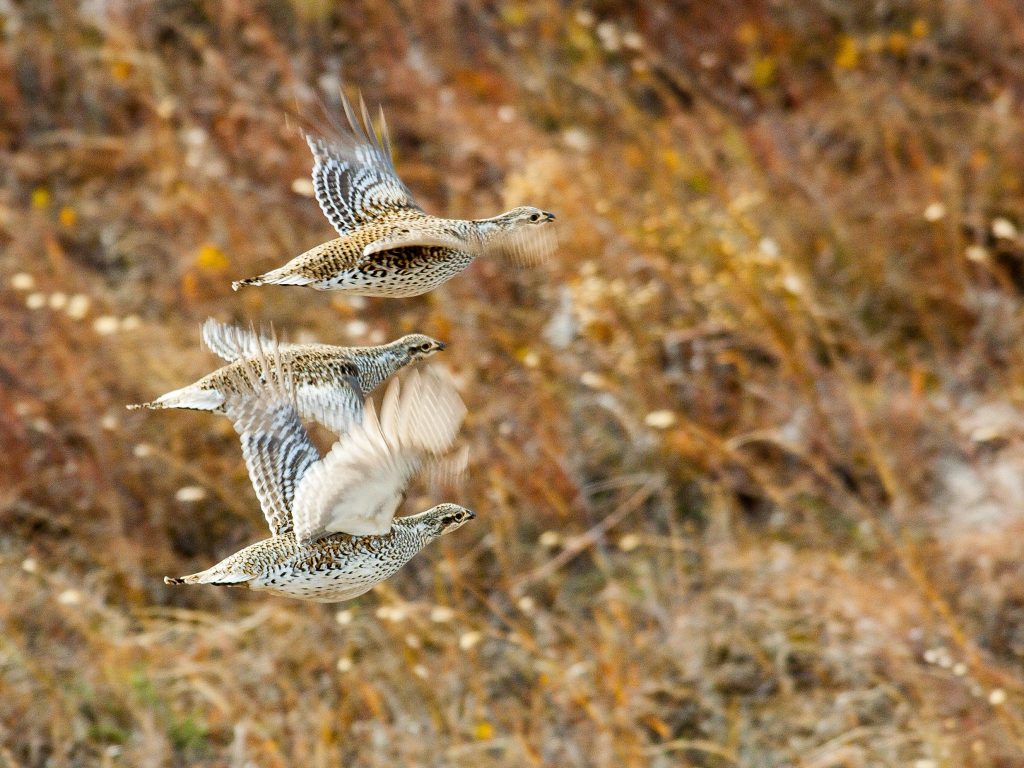
Story by Jeff Kurrus
Starting this fall, the Nebraska Game and Parks Commission, along with Pheasants Forever and Quail Forever, introduced the Nebraska Upland Slam. The concept is simple: harvest four birds – northern bobwhite quail, ring-necked pheasant, greater prairie-chicken and a sharp-tailed grouse – in Nebraska for an official certificate, pin, bragging rights and the chance to win prizes, including a Browning Silver 12-gauge shotgun.
NEBRASKAland Magazine wants hunters to take this a step further – try to accomplish this feat in two days. It can be done, but it will take some work. Start your planning right here.
Four Species
Northern bobwhite quail: Oct. 27, 2018 – Jan. 31, 2019 – Quail are at their highest populations in decades. In 2017, harvest was 44 percent higher than the 5-year average. Bobwhite quail are considered an “edge species,” meaning they can be found in areas where two or more habitats converge. For example, where grasslands abut cropland or woodland habitat.
“During fall and winter, bobwhites don’t stray far from woody cover,” said Nebraska Game and Parks Commission Upland Habitat and Access Program Manager John Laux. “Another important habitat element is bare ground – many grasslands are too dense for quail.” Many hunters work their dogs along weedy ditches, fencelines and other marginal cover containing native shrub thickets or downed trees. “Aerial imagery is a great scouting tool for quail hunters,” said Laux. “You can locate woody escape cover along field edges and really dial in where you need to spend your time afield.” Bobwhite densities are highest in southeastern Nebraska and west along the southern border with Kansas. That being said, quail populations have expanded into many other regions of the state (minus the extreme northwest) in recent years following several consecutive mild winters and improved habitat conditions.
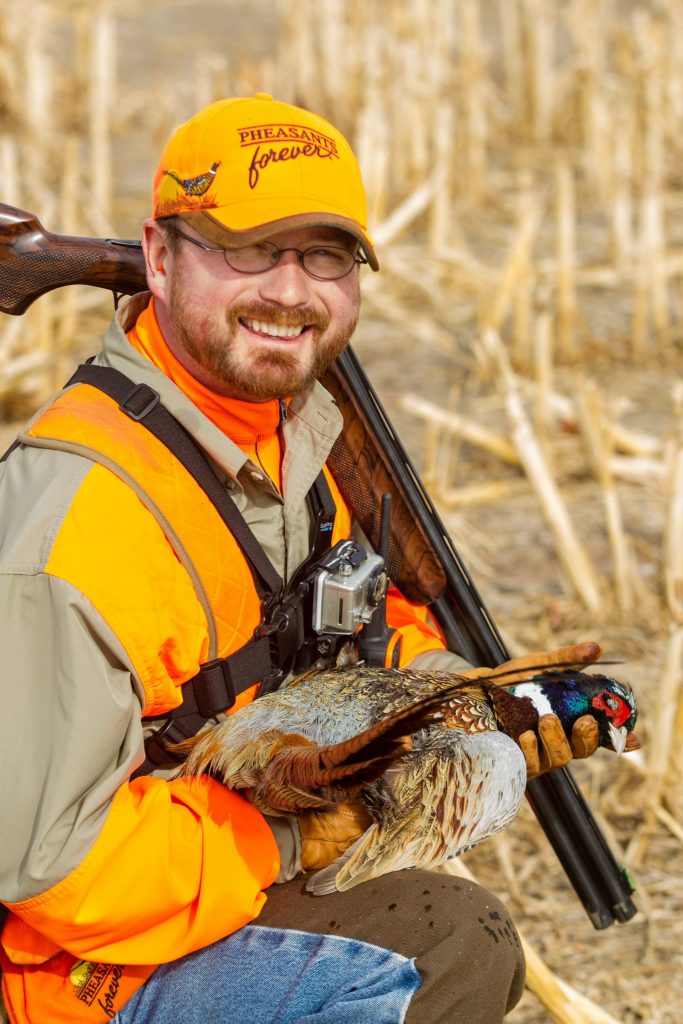
Ring-necked pheasant: Oct. 27, 2018 – Jan. 31, 2019 – Ring-necked pheasants can be found in a mixture of habitats – ranging from open grasslands to wetlands to cropland fringes. Nebraska’s most sought-after upland game species, pheasant populations are reliant upon proper habitat – undisturbed grasslands – and need this type of habitat on a large scale to maintain its numbers. Continued conversion of grassland to cropland and more efficient farming practices have greatly reduced the availability of pheasant habitat in many areas of the state. In recent decades, lands enrolled in CRP have become increasingly important to pheasants, especially in eastern Nebraska. Hunters should also focus on weedy pastures, unfarmed draws, and tall wheat and milo stubble fields.
According to Laux, Nebraska’s highest pheasant densities can be found in southwestern Nebraska and portions of the panhandle. “These landscapes have quite a bit of CRP and are very diverse in terms of other cover types,” said Laux. “Crop rotations here include winter wheat, and this provides additional nesting cover for pheasants.” Most public hunting opportunities within these regions occur on private lands enrolled in the Commission›s Open Fields and Waters Program (OFW). Historically, Hitchcock, Hayes, Chase, and Perkins counties have offered some of the best pheasant opportunities in the Southwest. The southern panhandle (Cheyenne, Deuel, and Garden counties) also supports good pheasant numbers, and public access opportunities have been expanded in this region over the past several years.
Greater prairie-chicken: Sept. 1, 2018 – Jan. 31, 2019 – Prairie-chickens prefer large tracts of undisturbed grasslands often with gently rolling topography but do occur in landscapes intermixed with cropland (more so than sharpies). This species tends to avoid trees and other obstructions and is typically more abundant in diverse grasslands with a high forb content. Like quail, chickens (and grouse for that matter) also tend to avoid dense grasslands. If you find yourself struggling to pick your feet up, you likely need to look elsewhere. Hunters typically walk the “tops” of ridges and use the topography to their advantage. Although big running pointing dogs are often preferred for hunting wide open grasslands frequented by chickens and grouse, some of the most successful hunters have their dogs work close, creating more of a stalking than flushing mentality. Hunting prairie grouse early in the season is recommended as birds are more dispersed and tend to hold better for dogs.

The central and eastern Sandhills represent the core of the prairie-chicken range in Nebraska, but some more isolated (and huntable) populations occur across southern Nebraska as well. In 2017, most of the Sandhills region experienced a widespread drought but prairie grouse populations are beginning to rebound following abundant precipitation throughout much of 2018.
Sharp-tailed grouse: Sept. 1, 2018 – Jan. 31, 2019 – Sharptails can be found in higher, choppy dunes of the west-central Sandhills and their distribution extends out into portions of the panhandle as well. In many instances, they can be found in the same habitat as prairie-chickens but are often a little more tolerant of woody vegetation. In the winter, sharpies bunch up and are often found in large thickets or linear tree rows.
Higher proportions of grouse are found west of Highway 83 in the Sandhills, including Samuel R. McKelvie National Forest, Crescent Lake National Wildlife Refuge (NWR), and even into the Pine Ridge region. Sharpies can also be found on some OFW lands in the southern panhandle as well.
Equipment
Dress in layers. To accomplish an upland slam in two days, 20 days, or something in between, being prepared to walk long distances is key with or without a dog. Have a base layer of non-cotton materials – such as polyester or a synthetic – with boots suited for these distances. Because grouse and chickens typically garner the most distance covered during an upland hunt – with many hunters covering multiple miles during a day – it’s important to be ready for long days afoot. Drinking water is a must – for you and your dogs.
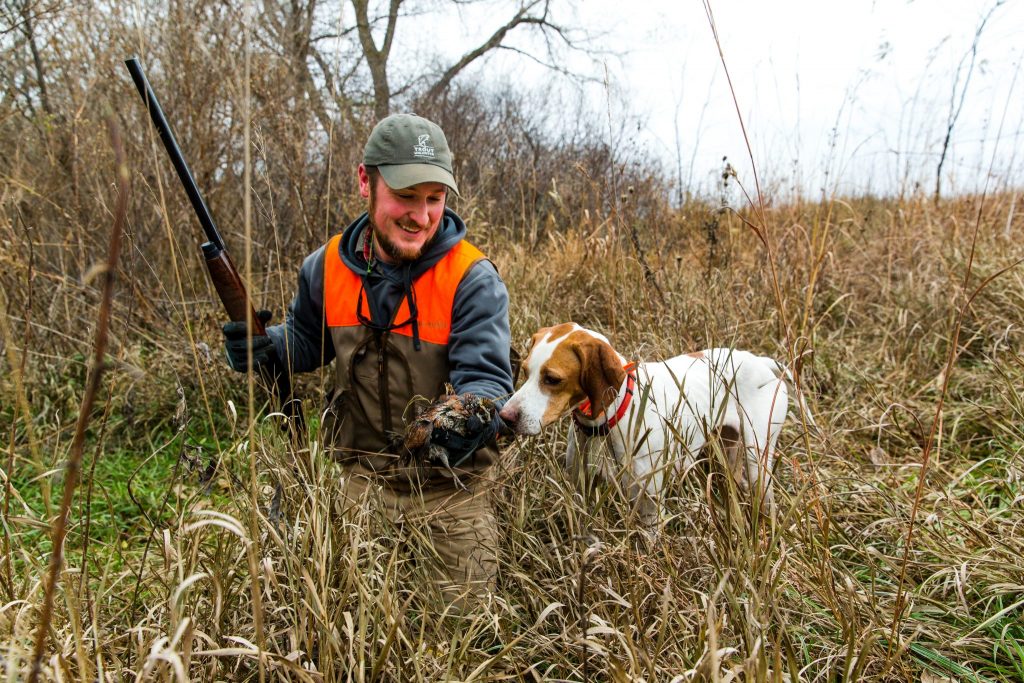
Gun choice is also an important component to accomplishing the upland slam. Because of these distances when hunting grouse and chickens, some hunters will carry lighter shotguns – such as a 20- or 16-gauge.
Regarding loads, lead No. 6’s are a great universal load, but hunters should also have lead 7½’s or 8’s in their orange vest if a covey of quail are found.
Hunters should also bring a separate vest with steel only. Some areas – notably the Valentine and Crescent Lake NWRs where grouse are often found – require nontoxic shot. Steel No. 3’s are a good multispecies load, and No. 6’s are excellent for bobwhites when carrying a 12-gauge.
Planning Your Trip
There are probably a handful of areas within the state where all four upland bird species could be encountered on a single hunt. Below I’ve provided a list of those premier honey holes – just kidding …. Realistically, there are quite a few places where 3 of the 4 coexist but you’re likely going to have to travel to get that last bird.
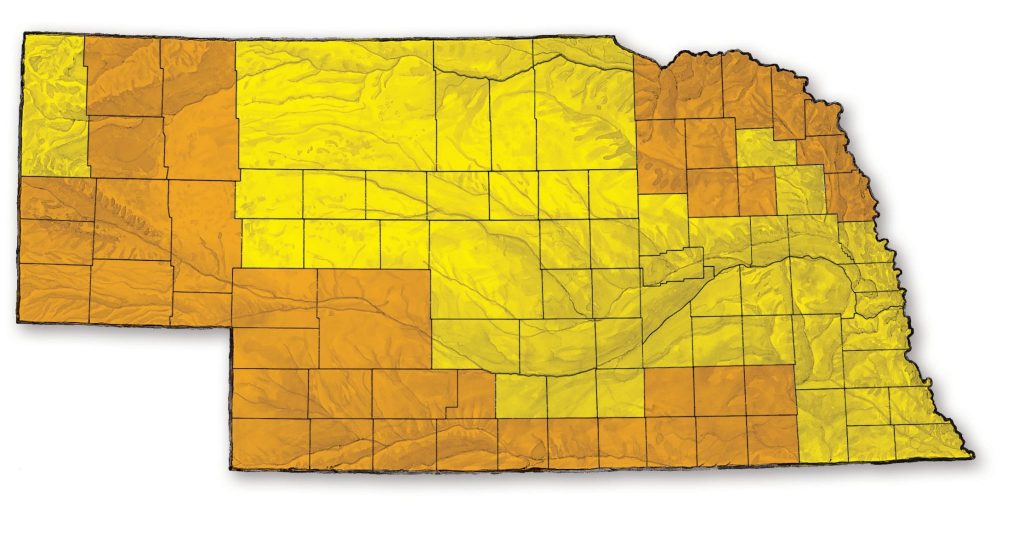
North-Central Sandhills – State and federally-owned lands near Valentine provide some excellent mixed bag opportunities. The choppy uplands at Valentine NWR support a good mix of chickens and sharpies, and the dense cattail marshes offer a decent chance at a bonus ring-neck. Sharp-tails tend to dominate the bag farther west at Samuel B. McKelvie National Forest and Merritt Reservoir Wildlife Management Area (WMA). Bobwhites are the challenge up here – you might find a handful of bobwhites around Merritt Reservoir but a better bet is to travel south and east to find some woody cover at the National Forest near Halsey or around Calamus Reservoir.
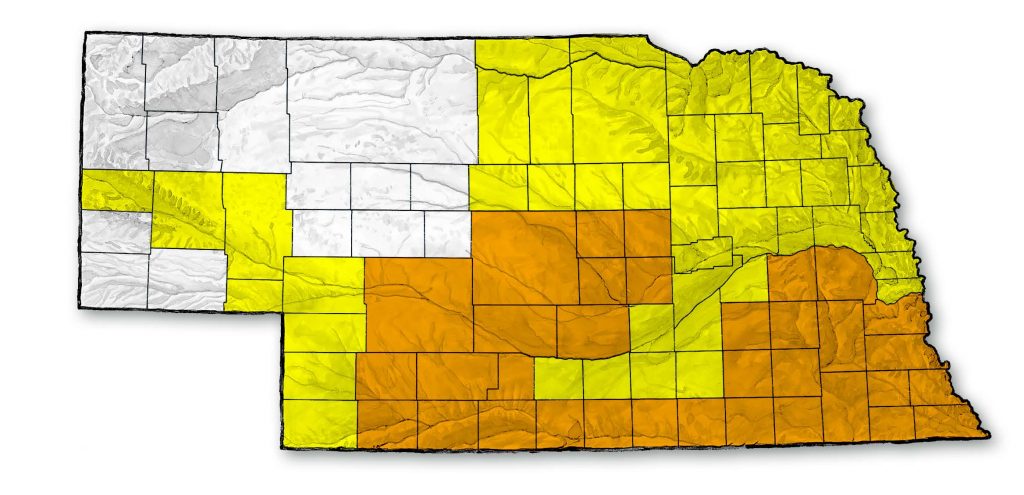
Western Sandhills/Panhandle – Out west, you’re inevitably going to have to travel south or east for a chance at a bobwhite but don’t overlook these upland hunting opportunities. Crescent Lake NWR is home to good numbers of sharpies and pheasants, and the sporadic prairie-chicken as well. Pheasant numbers are typically very good in Box Butte and Sheridan counties, but access is somewhat limited in this area. Farther west, the Oglala National Grassland and surrounding OFW lands provide endless opportunities for sharptails. This region has a little bit of everything but you’ll have to travel a ways to find it.
Southwestern Nebraska – Well-known for its pheasants, the southwest offers a legitimate chance to mix that up with bobwhites and chickens. Prairie-chickens are found in moderate densities throughout the region but some of the best public land opportunities will be on some of the larger OFW tracts in Chase, Perkins, Lincoln and Hayes counties. Bobwhites are more prevalent to the east – target some of the OFW lands east of Highway 83 in Red Willow, Frontier, Furnas, Gosper and Harlan counties. Medicine Creek WMA near Cambridge and Harlan County Lake near Alma also support good numbers of bobwhites intermixed with some ring-necks. You’ll likely have to travel a ways north to find your sharpies – look at Crescent Lake NWR, Halsey National Forest, or some of the OFW lands in the southern panhandle.
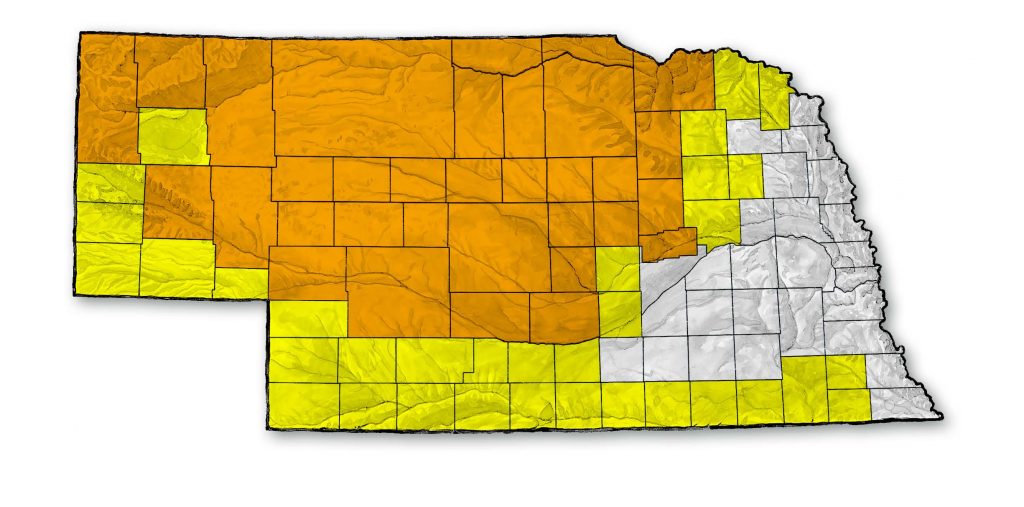
Southeastern Nebraska – This is prime quail country intermixed with some pheasant opportunities and even a bonus chicken. There are some excellent quail numbers on many of the state-owned WMAs and OFW lands throughout the region. To find a prairie-chicken here, focus on the larger tracts of open grasslands (which are limited in this region) in Thayer, Jefferson, Gage, Pawnee and Johnson counties – and keep in mind you need a special grouse permit if you hunt east of Highway 81.
Regardless of how long it takes, completing an upland slam is a major accomplishment for a hunter, but it shouldn’t be the only goal. Nebraska truly has some unique upland hunting opportunities in nearly every corner of the state and the best part is, many can be found on public lands. “The upland slam is meant to bring awareness to our excellent mixed bag opportunities, and also highlight our state’s great public land resources that are available to everyone,” said Laux.
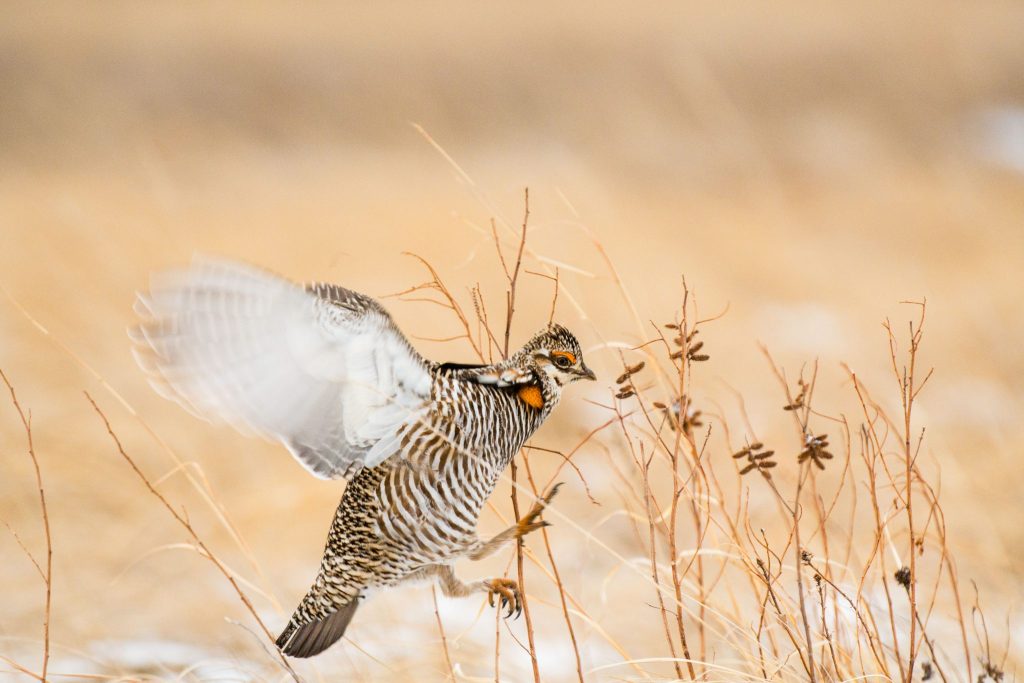
After you purchase a small-game license and harvest your first bird, create an account at OutdoorNebraska.org/UplandSlam and submit a photograph and details about your first bird. Then continue to log back in and document your success. For more information on public places to upland hunt, visit OutdoorNebraska.org/PublicAccessAtlas. For information on the East Zone grouse permit, call 402-471-5410. ■
The post An Upland Slam … In Two Days appeared first on NEBRASKALand Magazine.
















